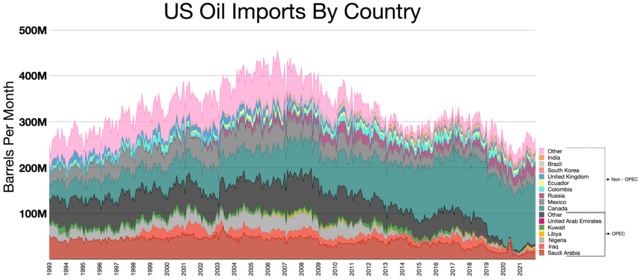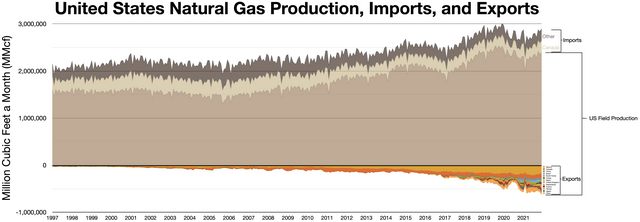
Petroleum in the United States
From Wikipedia, the free encyclopedia
Petroleum has been a major industry in the United States since the 1859 Pennsylvania oil rush around Titusville, Pennsylvania. Commonly characterized as "Big Oil", the industry includes exploration, production, refining, transportation, and marketing of oil and natural gas products.[1] The leading crude oil-producing areas in the United States in 2023 were Texas, followed by the offshore federal zone of the Gulf of Mexico, North Dakota and New Mexico.[2]

in barrels of oil a day (average for the month)






The United States became the largest producer of crude oil of any nation in history in 2023.[3] Natural gas production reached record highs.[4] Employment in oil and gas extraction peaked at 267,000 in March 1982, and totaled 199,500 in March 2024.[5]